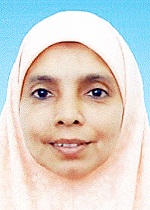Enhancing Day-light through Staircase in a Single Unit Residence
Keywords:
Abstract
For energy conservation and visual comfort in buildings, Daylighting stands as a useful source. In Dhaka city, the indoor spaces of a many residences do not get proper daylight as other buildings surround them from at least 2/3 sides. So, the staircase (if properly designed) can be a good source of natural light during daytime for at least the single-unit residences. The research aims to study the effectiveness of different window conditions and horizontal skylight configurations at the staircase to enhance the daylight condition for the indoor spaces of a single-unit residence. Computer-based software does the Daylight simulation. In the beginning, the model of the case room with a staircase was developed in ECOTECT. The existing lighting condition was analyzed. For generating realistic lighting levels, to validate and crosscheck the ECOTECT results, these models were exported to RADIANCE Synthetic Imaging software. Finally, the performance of different options was evaluated. It is expected that the outcome of this research will help architects and designers to consider the staircase as a lighting device to improve the daylight condition of the indoor spaces of the single-unit residences.
Downloads
References
Ahmed, Z. N. (1987). The effects of Climate on the design and Location of windows for Buildings in Bangladesh, MPhil thesis (unpublished), Sheffield City Polytechnic.
Ahmed, Z. N. and Joarder, M.A.R. (2007). An Observation on Daylight Inclusion in the Lighting of Offices in Dhaka. Protibesh, 11(1): pp. 51-61.
Baker, N. (2000) We are all outdoor animals, Architecture City Environment, Proc. of PLEA 2000, (eds.) Koen Steemers and Simos Yannas, James & James, London 553- 55.
BNBC. (2006). Electrical & electric engineering services for buildings. Chapter 01. Bangladesh National Building Code (BNBC). Dhaka.
Donepudi, P. K. (2018). Application of Artificial Intelligence in Automation Industry. Asian Journal of Applied Science and Engineering, 7(1), 7-20.
Donepudi, P. K. (2020a). Crowdsourced Software Testing: A Timely Opportunity. Engineering International, 8(1), 25-30. https://doi.org/10.18034/ei.v8i1.491
Donepudi, P. K. (2020b). Leveraging Cloud Computing and High Performance Computing (HPC) Advances for Next Generation Projects and Technologies. American Journal of Trade and Policy, 7(3), 73-78. https://doi.org/10.18034/ajtp.v7i3.499
Dubois, M. C. (2001). Impact of Shading Devices on Daylight Quality in Offices: Simulations with Radiance, Report TABK—01/3062, Lund University, Dept. of Construction and Arch., Sweden.
Nicklas, M. and Bailey, G. (1995). Analysis of the performance of students in daylit schools in Proceedings of the National Passive Solar Conference, 1996, pp. 132-137.
Seraj (2018) Configuration Of Windows And Partition Walls Of Residential Apartments To Improve Daylight Condition In Dining Spaces
Downloads
Published
How to Cite
Issue
Section
License
Copyright (c) 2020 Asian Journal of Applied Science and Engineering

This work is licensed under a Creative Commons Attribution-NonCommercial 4.0 International License.








